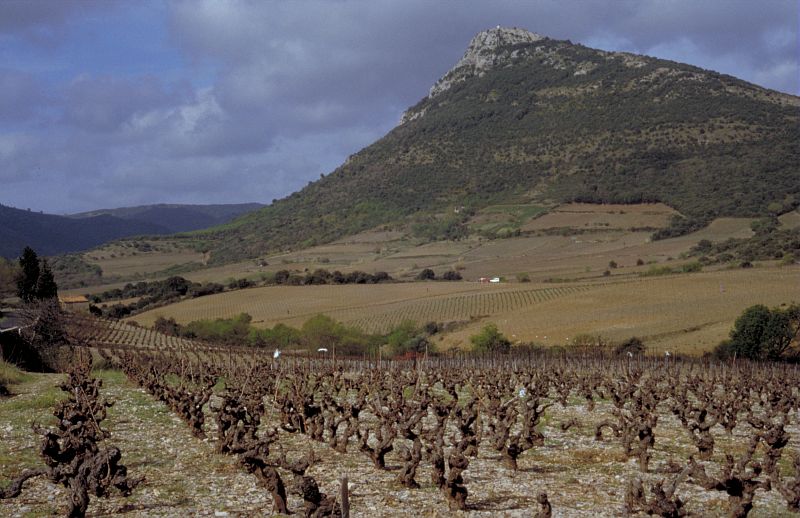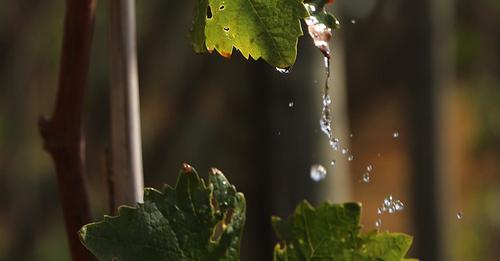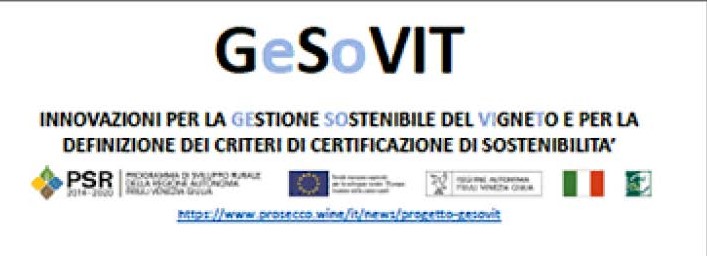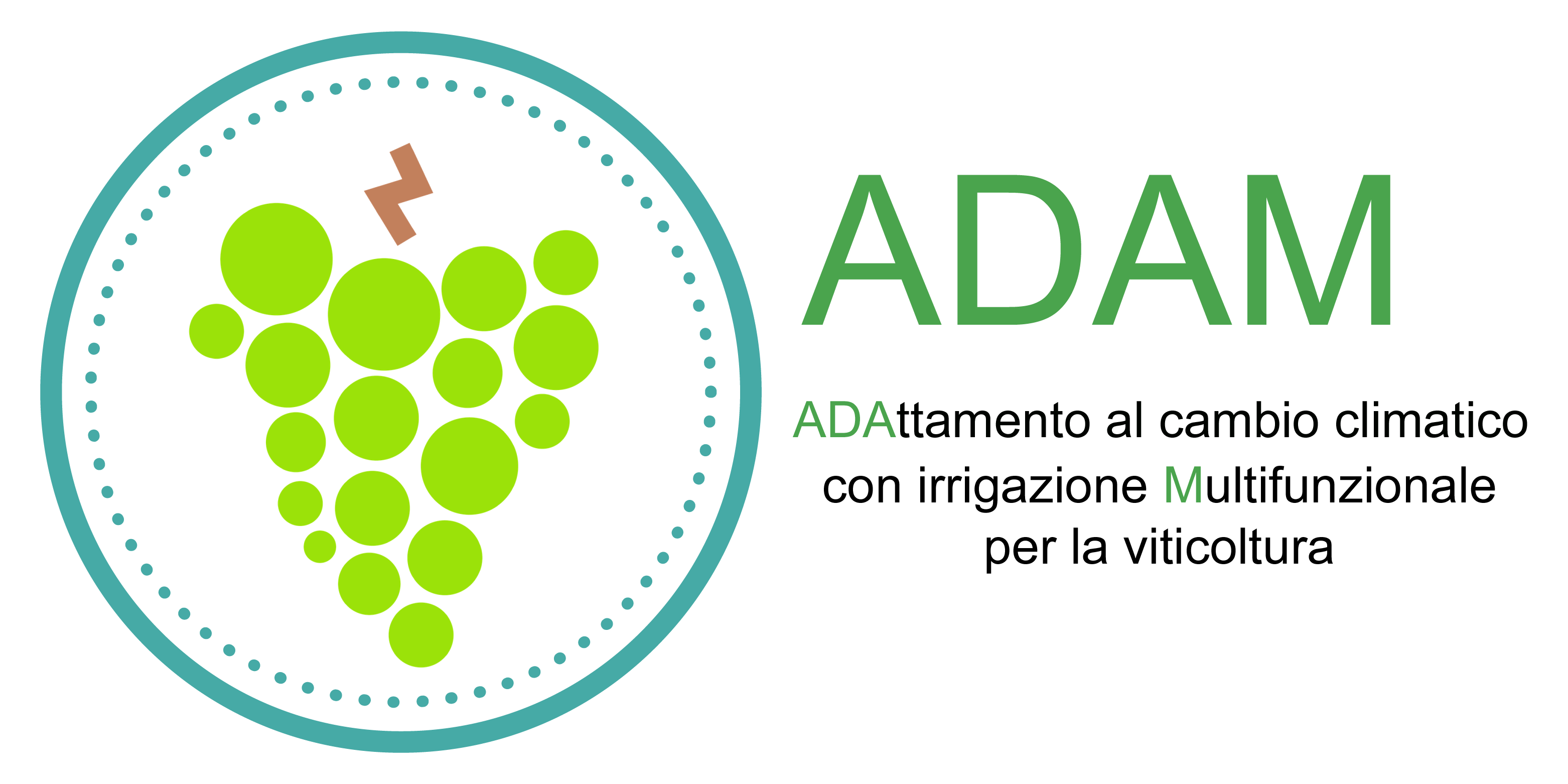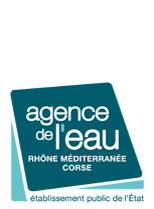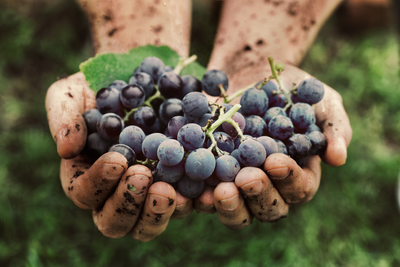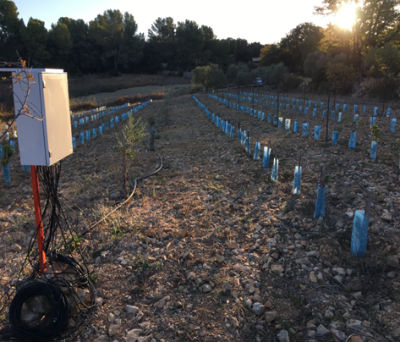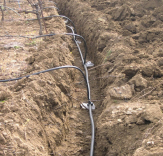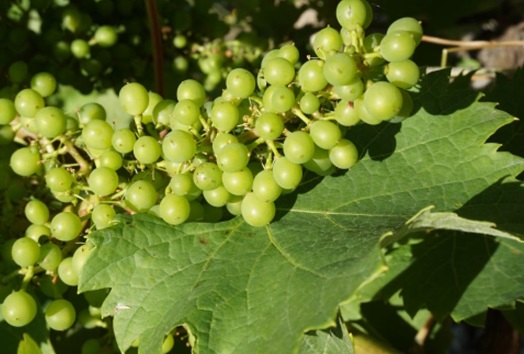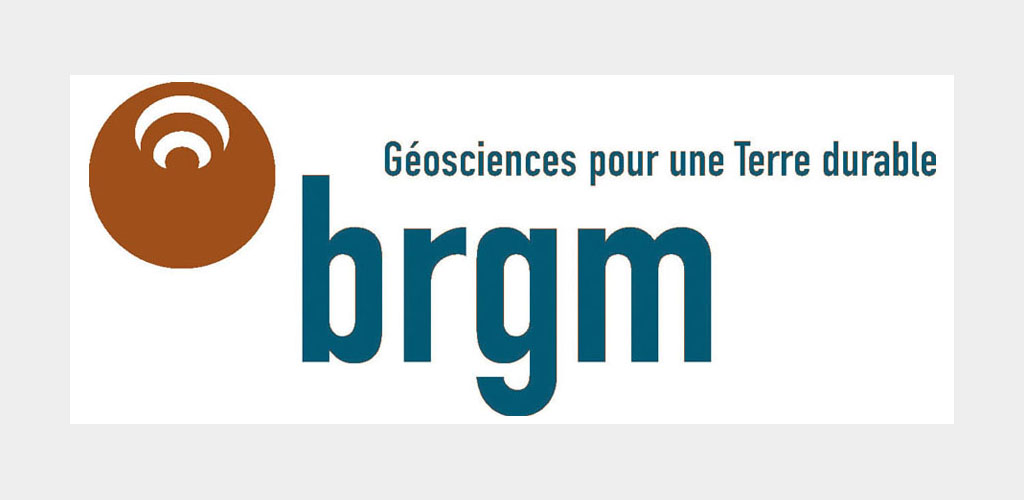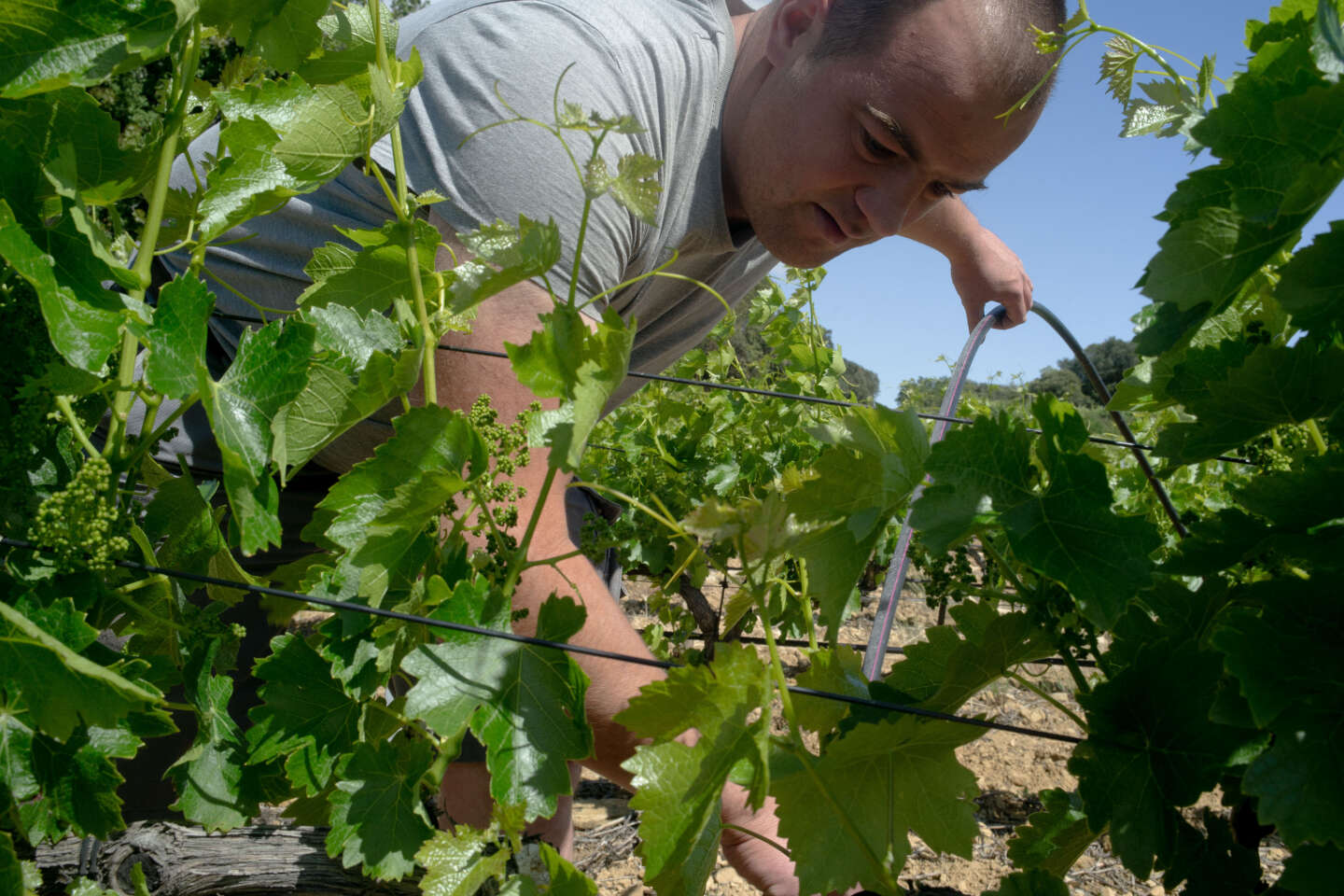Irrigating the vineyards
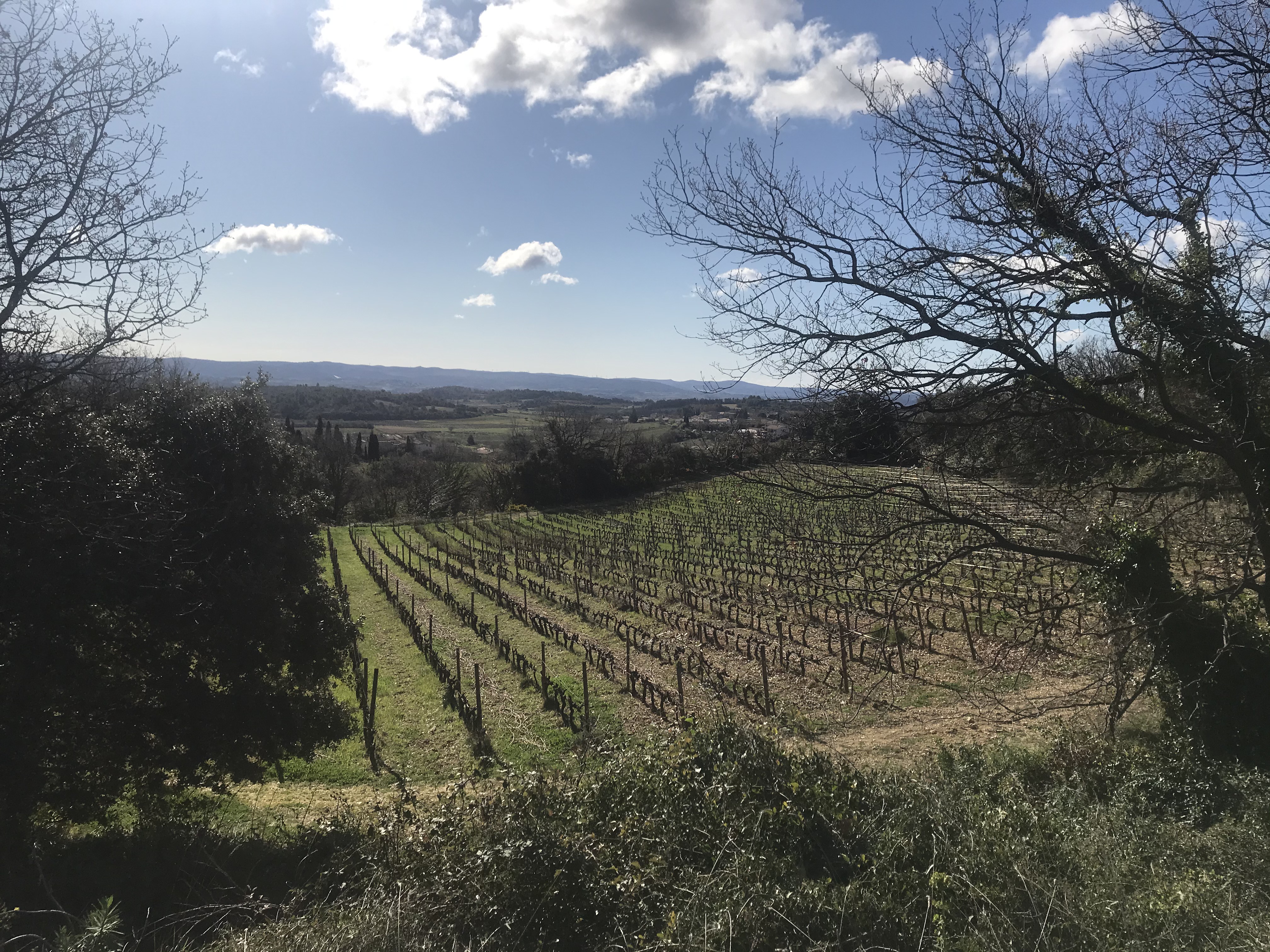
Wine has been historically grown without water in the northern part of the Mediterranean areas. Specifically, wine has been located on relative poor soils that were the opportunity to produce qualitative wines. Indeed a relative drought is positive for the wine and the quality of the vine produced. In this perspective, we can say that the value of vine stems from climate. However, for different reasons, among which climate change and the strengthening of hydric stress constraints, irrigating the wine becomes an option for more and more wines in the Mediterranean area. This technical option involves important changes and induce particular consequences that must be contemplated with care before deciding to turn to it at collective or individual level.
For example, in Languedoc-Roussillon the irrigated wine area is expected to be around 15% of the total wine area.
The technical options for irrigation are:
- Irrigating only the young plants (in the first years) or the wine at mature stage
- The water used for irrigating the wines are usually natural water but alternative resources are considered in some cases, such as treated wastewater
- The technical equipment (gravity to drip irrigation). New irrigation developments are done with drip irrigation in general
- The “piloting » or water management options that influence the quantity of water applied (when and how is the water applied?)
As mentioned before irrigation is not a standard climate change adaptation option. The following points relative to both water management and economics should be kept in mind :
- Water quantity management challenges
Regulation on water uptake exist in the EU (Water Framework Directive) and has been transposed to national regulations. In the Mediterranean countries, water is often relatively scarce and even not available/accessible everywhere. Moreover, available, renewable resources are often overexploited by uses (agriculture, drinking water and industry) and water use might be regulated both in terms of (i) access (who can access the “rights”) and (ii) volume/flow uptake. Wine is not a vital good : it does not directly contribute to food sovereignty even though it holds very important cultural and territorial values such as landscapes and job creation. We should keep in mind that in a possible future where water will become scarcer, if water uses need to be cut down on some territories: wines might be one the first activities with water restrictions. As such irrigation can be seen as a risky adaptation (spending a lot to invest in irrigation with chances not to be able to use this solution at a full capacity) or even a maladaptation.
In parallel the research for always more efficient irrigation means or increased productivity of water (more crop per drop) has shown its limits. The so called rebound-effect illustrate that if less water is required to irrigate one hectare (there is also less water that goes back to the resource) and this enables to expand irrigation with likely negative environmental effects. In other words, a resource efficiency program does not guarantee at all any reduction in the effective uptake from the resource if land irrigated is not controlled for.
- Economic dimensions:
- Irrigating wines has a non-negligible cost often largely subsidised by public money when the access is through surface collective networks. A very large share of the cost stems from the investment in parcel equipment and connexion to the existing networks or digging a well.
- Before deciding to expand or develop irrigation (at farm or collective level) one should contemplate whether the total cost of irrigation is covered by the benefits provided by the water over the long term. This point is rarely considered in public hydraulic programs.
- The justification of public support should be backed up with public or territorial benefits of irrigation. Often the argument of the conservation of agricultural jobs is advanced, but more efforts should be put to demonstrate it.
- From a public and general interest point of view we can wonder whether it is relevant to allocate water to wine growing rather to other uses. Why should the taxpayer pay for irrigating the wines when there is no added value (from irrigation) on landscapes, culture … production of public goods ?
- Equity
Equity issues must also be considered since there is public money in irrigation programs : who will have access to water ? Is it better to guarantee little water to a lot of farms or minimize the number of farms with a guaranteed access/volume ?
As a summary, irrigation the wine will only be feasible in specific situations where both :
- the availability of the water is guaranteed without risk of users conflicts because wine will not be prioritatory
- The farm/winery can guarantee technical and financial sustainability of irrigation
A public debate must be held on the conditions of acceptance of allocating water to wine : does the allocation of water to wine needs to hold some counterparts for the territory (e.g. local transformation to increase added value on the territory, jobs, environmental quality…) ?
Author : Nina Graveline (UMR Innovation - INRAE)
Acknowledgements : Patrice Garin (UMR G-eau – INRAE )
Ligações relacionais
- Rede
- Lista
- Geolocalização
- Mais
Un article dans TheConversation montre que face au changement climatique les vins d'appellation doivent s'appuyer sur une cogestion adaptative de leur terroir
- Mais
Il documento è stato redatto dal Gruppo di esperti “Protezione della vite e tecniche viticole”(PROTEC) della Commissione “Viticoltura”.
- Mais
GeSoVit - Innovazioni per la gestione sostenibile del vigneto e per la definizione dei criteri di certificazione di sostenibilità ambientale per l'azienda vitivinicola
Adozione di nuove pratiche per una generale riduzione dell’impatto ambientale e protocolli propedeutici e funzionali per la certificazione di sostenibilità ambientale dell’azienda vitivinicola
- Mais
ADAM - Adattamento al cambio climatico con irrigazione multifunzionale per la viticoltura
Il progetto ADAM esplora le potenzialità della gestione multifunzionale dell’irrigazione in vigneto per la minimizzazione degli effetti negativi provocati da eventi meteorologici estremi, come gli stress estivi idrici e termico-radiativi e le gelate primaverili.
- Mais
Desenvolver ferramentas para avaliar o stress hídrico da videira
O stress hídrico da videira é um dado fundamental para gerir uma possível rega, bem como as intervenções aí a realizar.
- Mais
Eaux usées en irrigation à Murviel
La réutilisation des eaux usées pour l'irrigation diminue la pollution, accroît la ressource en eau et valorise les nutriments des eaux usées.
- Mais
INRAE - Institut national de recherche en agriculture, alimentation et environnement
INRAE, l’Institut national de recherche en agriculture, alimentation et environnement est né le 1er janvier 2020. Il est issu de la fusion entre l’Inra et Irstea
- Mais
Irrigação gota a gota da vinha
A rega gota a gota abre novas perspectivas em termos de economia de água, precisão, automação e fertirrigação.
